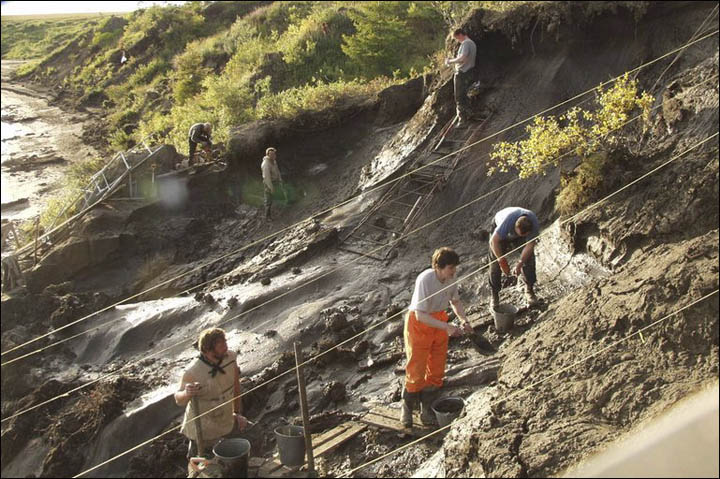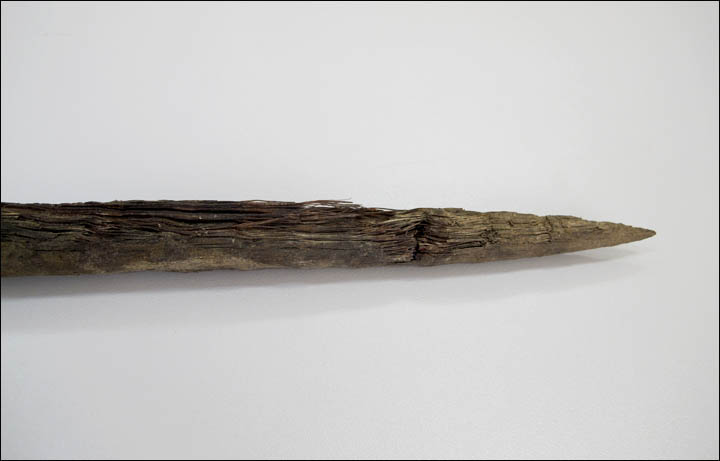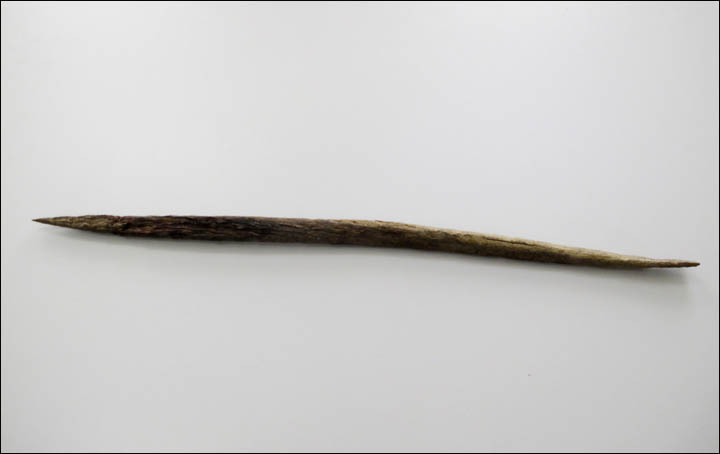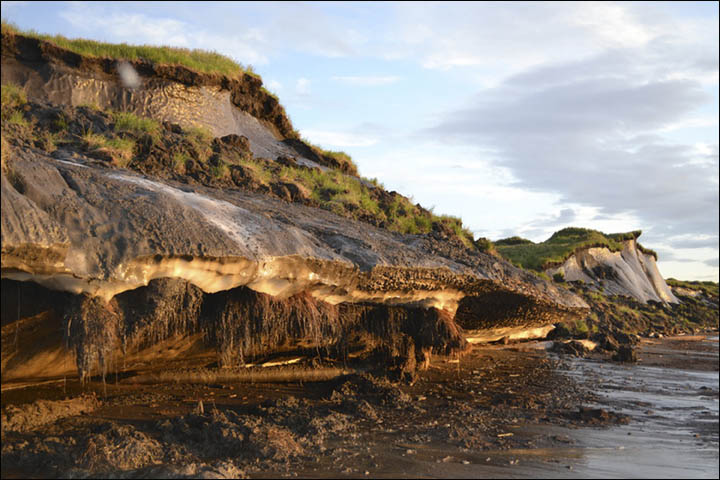Studies on the intriguing rhino spear are still ongoing but this remarkable find - seen as having considerable archeological significance - was shown to Vladimir Putin on his recent visit to Yakutsk, capital of the Sakha Republic.
The spear tip, almost 90cm in length and seemingly still sharp enough to kill, was found on the island of Bolshoy Lyakhovsky, off the northern coast of Siberia, as researchers hunted for remains of woolly mammoths.
'This year we found a spear made of woolly rhino horn and if all the information is confirmed, it will be the northernmost point where a human implement was found - three degrees latitude further north than we had known before,' explained Semyon Grigoryev, Director of the Lazarev Mammoth Museum at Northeastern Federal University.

'This find helps our understanding of how far north people penetrated in the Paleolithic Era. At the same time, there are no analogues in the world for this discovery.'
The weapon was dated as being 13,300 years old after being sent for analysis to Groningen University in the Netherlands.
Rhinos in Siberia died out around 12,000 years ago.
Previously, woolly rhinoceros horn has been seen as a component in the construction of ancient spears in Siberia, for example in the coupling of a stone tip to the shaft.
'It is first time we see that the tip - and such a long tip - was made of rhino horn,' he said.
'The woolly rhino's horn is rather hard, but flexible at the same time.
'It consists of keratin - a substance that makes up our hair and nails. Deer horn or cow horn, by contrast, consist of bone substance.'
Grigoryev believes more rhino spears may be found, and further evidence of early man on the island, part of the New Siberian, or Novosibirsk, archipelago.

The spear suggests these early Siberians were accomplished hunters.
'Woolly rhinos were rather dangerous animals, and hunting them could be regarded as a huge trophy,' he said.
'The spear is also in one-piece, so it could be made only from the horn of a big, mature rhino.'
At the Yana River site, dating back approximately 30,000 years, were found such artifacts as axes, stone scrapers, worked quartz crystals, tools made of wolf bone, and spear foreshafts made of mammoth tusk and rhinoceros horn.







Reader Comments
to our Newsletter